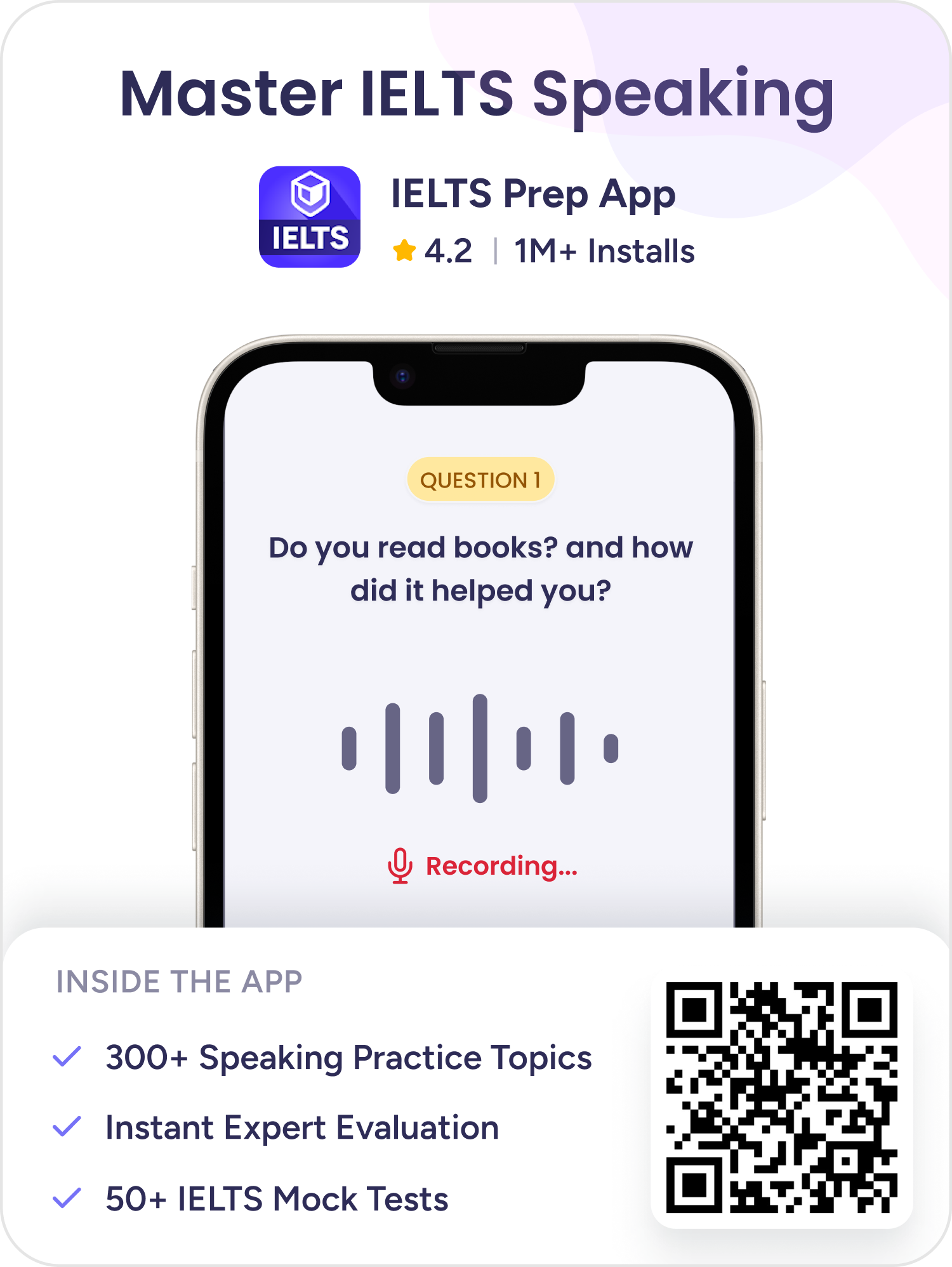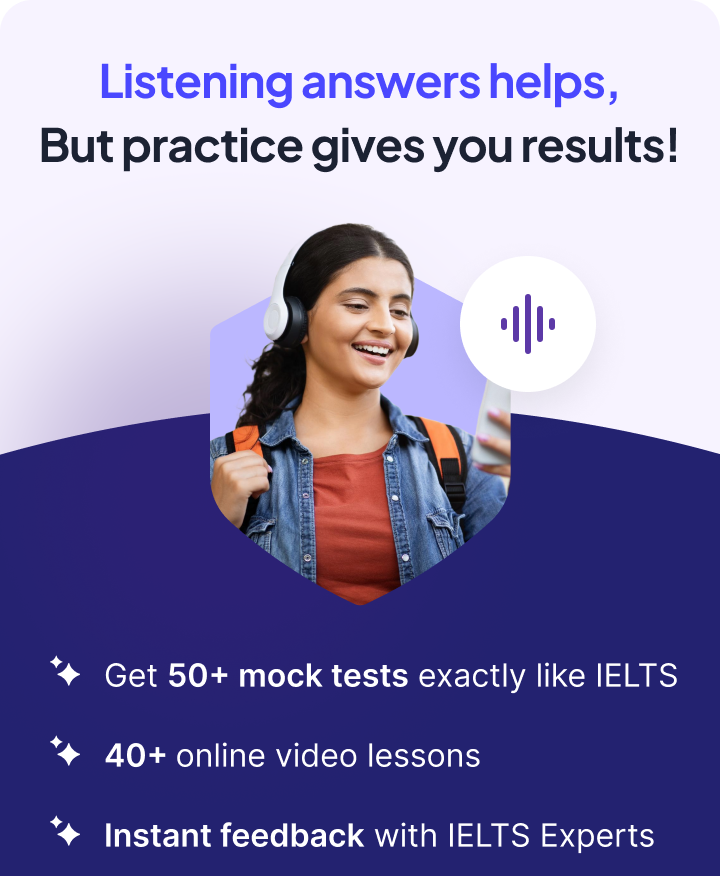Describe an online video in which you learned something new: IELTS Speaking Cue Card
You should say
- When and where you watched it
- What it was
- Why you watched it
- And explain what you have learned from it
34 unique answers with expert feedback
Band 7
00:00
/
00:00
Follow up questions
Follow up questions
What other skills have you learned online?
How do you think online learning compares to traditional education?
What challenges did you face while learning coding online?
Band 7
00:00
/
00:00
Follow up questions
Follow up questions
What other online videos have you found helpful for learning new skills?
How do you think online videos compare to traditional learning methods?
Have you ever created your own content based on what you've learned from online videos?
Band 6-7
00:00
/
00:00
Follow up questions
Follow up questions
What other dishes have you learned to cook from online videos?
How do you think online cooking videos compare to traditional cooking classes?
Have you ever faced any challenges while learning to cook from videos?
Practice other cue cards
Band 6-7
00:00
/
00:00
Follow up questions
Follow up questions
What other online platforms do you use for learning?
How do you think learning programming languages can benefit your career?
Can you share a specific project you worked on after learning programming?
Band 6-7
00:00
/
00:00
Follow up questions
Follow up questions
What other skills have you learned through online videos?
How do you think online videos compare to traditional learning methods?
What challenges did you face while learning pottery online?
Cue 1:When and where you watched it
- Begin by specifying the time and location where you viewed the video.
- Mention any relevant context, such as whether it was during a break or at home.
Example
I watched the video last Saturday evening at home, sitting comfortably on my couch. It was a relaxing weekend, and I had some free time to explore new topics.
Cue 2:What it was
- Clearly describe the content of the video, including its title and main subject.
- Mention the platform where you found the video, such as YouTube or a specific educational website.
Example
The video was titled 'How to Cook Authentic Indian Biryani' and was available on YouTube. It featured a renowned chef demonstrating the step-by-step process of making this popular dish.
Cue 3:Why you watched it
- Explain your motivation for choosing this particular video.
- Share any personal connection or interest you have in the topic.
Example
I decided to watch it because I love Indian cuisine and wanted to learn how to prepare biryani for an upcoming family gathering. I had always been intimidated by the recipe, but I thought this video could help me.
Cue 4:And explain what you have learned from it
- Summarize the key skills or knowledge you gained from watching the video.
- Reflect on how this learning experience may impact your cooking or daily life.
Example
From the video, I learned the importance of marinating the meat and the right spices to use for authentic flavor. The chef's tips on layering rice and meat were particularly helpful, and I now feel confident to try making biryani myself.
Conclusion
- Wrap up by summarizing your overall experience of watching the video.
- Mention any future plans related to what you learned.
Example
In conclusion, watching this video not only taught me how to cook biryani but also sparked my interest in exploring more Indian recipes. I plan to try cooking it for my family next weekend and share the experience with them.
Following this structure will ensure you cover all the essential points while providing a clear and engaging response to the cue card topic.
Tips to answer this Cue Card
1: Vague Descriptions
Using vague language can make your answer unclear. It's important to provide specific details about the video to engage the listener and demonstrate your language skills.
Tip
Include specific examples from the video, such as key moments or interesting facts, to make your answer more vivid and memorable.
2: Lack of Structure
A disorganized response can confuse the listener. It's essential to follow a clear structure to ensure your answer flows logically and covers all cues.
Tip
Use the provided cues as a checklist to organize your thoughts, addressing each point in a logical order.
Overly Simple Language
Using overly simple language can limit your score. It's important to showcase a range of vocabulary and complex sentences to demonstrate your English proficiency.
Tip
Practice using varied vocabulary and sentence structures when discussing the video to enhance the richness of your response.
IELTS Cue Cards asked last week
Reported by Leap students who gave IELTS
All Answers
Here are all the answers by real-users practicing speaking for IELTS Cue Cards on our IELTS Prep App.
Band 7
Band 7
Band 6-7
Band 6-7
Band 6-7
Band 6-7
Band 6-7
Band 6
Band 6
Band 6

Explore
473 Cue Cards

Personal Experience
121 Cue Cards

Describing People
66 Cue Cards

Travel
47 Cue Cards

Personal Development
45 Cue Cards

Hobbies/Interests
44 Cue Cards
Environment/Culture
39 Cue Cards

Tech/Media
27 Cue Cards

Education/Work
19 Cue Cards

Social Issues
19 Cue Cards

Describe An Object
16 Cue Cards
Business/Shopping
16 Cue Cards

Food/Cooking
8 Cue Cards
Fashion
6 Cue Cards
Get the IELTS Prep App
4.2
1M+ Installs
Get the IELTS Prep App
4.2
1M+ Installs
Get the app link on your phone
Or download app from





